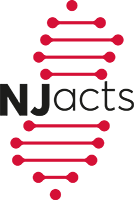Elisa Kallioniemi slides a circular disk over her head, stops above her right ear and clicks. Her left hand jumps. She moves it a couple of inches back, clicks again, and is suddenly speechless, mid-sentence. With a single pulse of electromagnetic energy, her device can activate or inhibit the brain’s major command centers. What she is now trying to determine is whether multiple pulses in the motor cortex can produce longer-term therapeutic results by retraining neural circuits. Her first focus is people who have lost some control of their limbs following a stroke.
“We know from psychiatry that by activating neurons with transcranial magnetic stimulation (TMS) we can change the way the brain functions,” said Kallioniemi, an assistant professor of biomedical engineering at New Jersey Institute of Technology. The therapy has FDA approval for clinical treatment of depression, obsessive-compulsive disorder, smoking cessation and migraines with auras.
“But there are no FDA-approved TMS therapies at this point for motor rehabilitation,” she added. “People need to relearn motor skills such as grasping after a stroke, for example, which changes brain structure and function.” Funded by the New Jersey Alliance for Clinical and Translational Science, she will first test healthy people to get a better understanding of the neurophysiological effects of TMS. She’ll measure their speed and accuracy in typing a series of numbers and record changes in the peripheral muscles with electromyography to see how effectively TMS activates the motor system. To read the full story.
